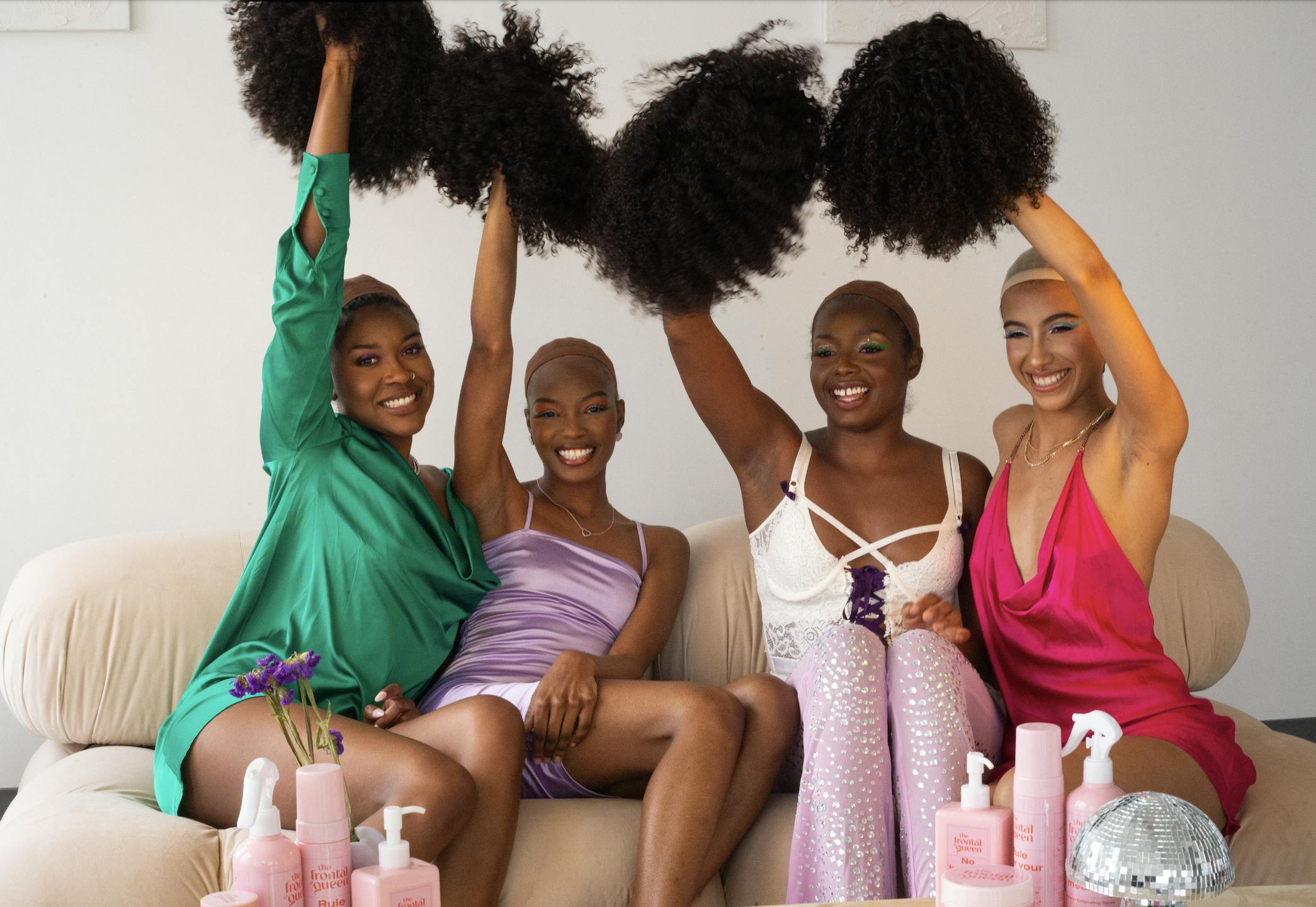Raw Hair, Remy Hair, Horse Hair?? What's the difference?

5 Min Read

5 Min Read
Horse hair, Remy hair, Cambodian hair we have heard them all. What makes each of them different? Knowing the difference between the different types of human hair extensions would help in the buying process and would give you a total understanding of the type of human hair extension you are purchasing.

1. Raw Hair
- Definition: Raw hair also referred to as “True Virgin Hair” is completely unprocessed hair that has not been chemically treated, dyed, or altered in any way.
- Source: It is typically sourced directly from a single donor and comes with the cuticle intact and aligned in the same direction. The donor's hair is cut and sewn onto a weft.
- Durability: Highly durable and can last a long time with proper care.
- Natural Appearance: Looks very natural and can be styled, colored, and treated like natural hair. Colour: Virgin hair has a natural-looking color that’s never jet black. It’s more of a natural black or brown. There may be a grey hair or two in the mix.
- Texture: Available hair textures are limited to natural hair patterns. Usually has a natural wave.
- Maintenance: Raw hair extensions are typically harder to maintain as they are meant to be taken care of as you would your actual hair.
- Cost: Typically more expensive due to its high quality and natural state.
What does Cambodian raw hair, Vietnamese raw hair and so on mean?
Raw hair is usually sourced from Southeast Asian countries. So the name should represent the country it is sourced from. However, it's not always accurate, some vendors use these terms for marketing, not as a source guarantee.
2. Virgin Hair
- Definition: Virgin hair is hair cut from one or more donors it is not chemically processed but goes through a steam process to get waves.
- Texture: Virgin hair has been processed to achieve the texture pattern in effort to mimic a particular hair style or pattern.
- Source: Sourced from a single donor, ensuring consistency in texture and color.
- Quality: High quality, as the hair cuticles are intact and aligned.
- Versatility: Can be dyed, straightened, curled, and styled like natural hair.
- Longevity: Lasts longer than processed hair due to its unaltered state.
- Cost: Also expensive, but slightly less so than raw hair.
3. Remy Hair
- Definition: Remy hair refers to hair extensions where the cuticles are kept intact and aligned in one direction to prevent tangling.
- Source: Typically sourced from donors and carefully processed to maintain cuticle alignment.
- Smooth and Silky: Maintains a smooth, silky texture due to cuticle alignment. Colour Variations: May be available in jet black shades and other dyed colors
- Natural Look: It looks natural and blends well with the wearer’s own hair.
- Less Tangle and Shedding: Reduced tangling and shedding compared to non-Remy hair.
- Cost: Moderate to high, depending on the source and processing.
Finding the perfect hair extensions can feel overwhelming, but it doesn't have to be! The Frontal Queen offers a wide range of wigs and bundles in various styles and price points to suit your needs. Shop our collection now and discover your dream hair!
4. Non-Remy Hair
- Definition: Non-Remy hair is hair collected from various sources where the cuticles are not aligned. Since non-Remy hair is collected randomly, hair manufacturers need to make the hair smoother and less prone to tangling
- Source: Non-Remy hair is human hair harvested from multiple heads. Often collected from hairbrushes, salon floors, or other places where hair is not carefully sourced. It is sometimes collected in piles.
- Lower Quality: Prone to tangling and matting due to misaligned cuticles.
- Shorter Lifespan: It generally has a shorter lifespan compared to Remy's hair.
- More Processing: Often chemically treated to mask issues, which can reduce its natural appearance and durability.
- Cost: More affordable due to lower quality and durability.
5. Processed Hair
- Definition: Processed hair has been chemically treated to change its color, texture, or other characteristics.
- Source: Can be sourced from various donors or even non-human sources.
- Variety: Available in many styles, colors, and textures due to extensive processing.
- Lower Durability: The chemical processes can damage the hair, making it less durable.
- Maintenance: Requires more maintenance to keep it looking good.
- Cost: Generally cheaper due to the extensive processing and lower quality.
6. Synthetic Hair
- Definition: Made from synthetic fibres designed to mimic human hair.
- Source: Completely man-made.
- Cost-effective: More affordable than human hair extensions.
- Low Maintenance: Requires less maintenance but cannot be styled with heat tools.
- Less Natural: Does not look as natural or blend as well as human hair.
- Durability: Less durable and cannot be restyled.
Choosing the Right Type
- For a natural look and longevity: Use raw or virgin hair.
- For smoothness and manageability: Remy hair.
- For budget-friendly options: Non-Remy hair or synthetic hair.
- For variety and style options: Processed or synthetic hair, if heat styling is not required.
Each type of hair extension has its pros and cons, and the best choice depends on individual needs, preferences, and budget.
P.S. Healthy hair is happy hair, and that applies to your extensions too! The Frontal Queen offers a wide range of wigs and bundles at different price points and styles, plus all the hair care products you need to keep them looking flawless.
